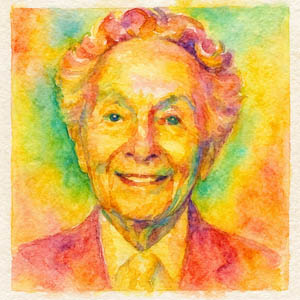~ Erté
 Known as the “Father of Art Deco,” illustrator and designer
Erté was born Romain de Tirtoff (1892–1990) in St. Petersburg, Russia.
Known as the “Father of Art Deco,” illustrator and designer
Erté was born Romain de Tirtoff (1892–1990) in St. Petersburg, Russia.
The son of an admiral, he grew up surrounded by the magic of opera and ballet. Expected to pursue a military life, he rebelled early. “Once I had staged my first rebellion against those wooden soldiers, there was no let-up,” he said.
Adopting the name Erté, the French pronunciation of his initials, he fell in love with Paris and transformed its fashion world with colorful and innovative designs. His imaginative Folies-Bergère costumes and stage sets were extravagant and instantly iconic.
“I loathe wearing the same clothes two days running or eating the same dishes over and over again,” he admitted. He created garments for the infamous spy Mata Hari. “She was not really beautiful. She had a sensuous body, but she lacked personality. Her exotic image was a product of her own vivid imagination.”
His groundbreaking cover art for Harper’s Bazaar (1915–1937) was admired for its meticulous detail and geometric beauty.
Solitary by nature, Erté valued time alone. “I’m like a cat,” he said, independent, patient, and attuned to quiet. Celebrating the power of the female body, he designed for the Ziegfeld Follies, Hollywood studios, Josephine Baker, Anna Pavlova, and Barbra Streisand.
Across the catwalk, Broadway, lithographs, and sculpture, he worked for more than seventy-five years. His influence lived on in designers such as Oscar de la Renta and Yves Saint Laurent.
“I’m in a different world,” he wrote in his autobiography, “a dream world that invites oblivion. People take drugs to achieve such freedom from their daily cares. I’ve never needed them.”
 I invite color and variety into my life.🌺
I invite color and variety into my life.🌺
